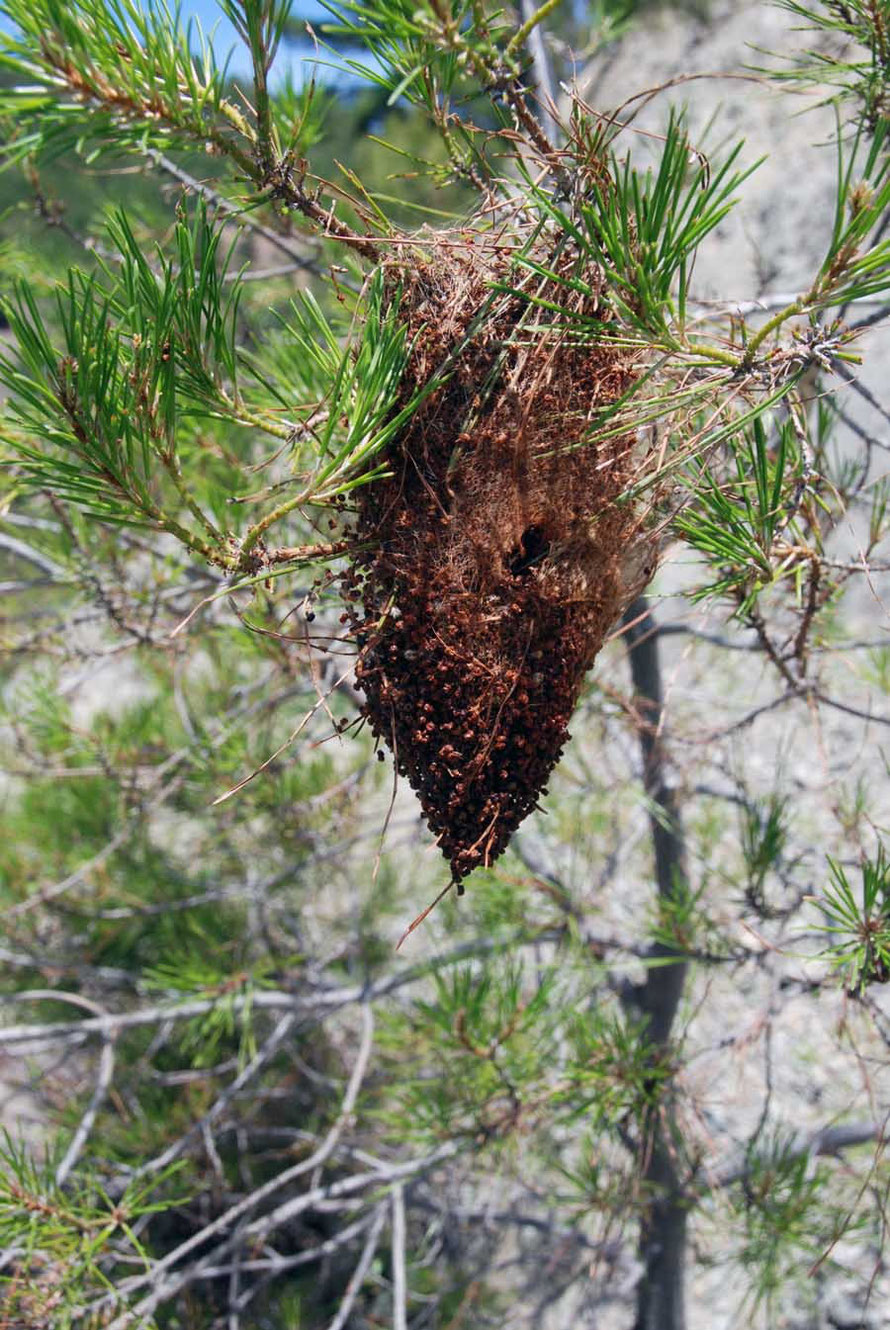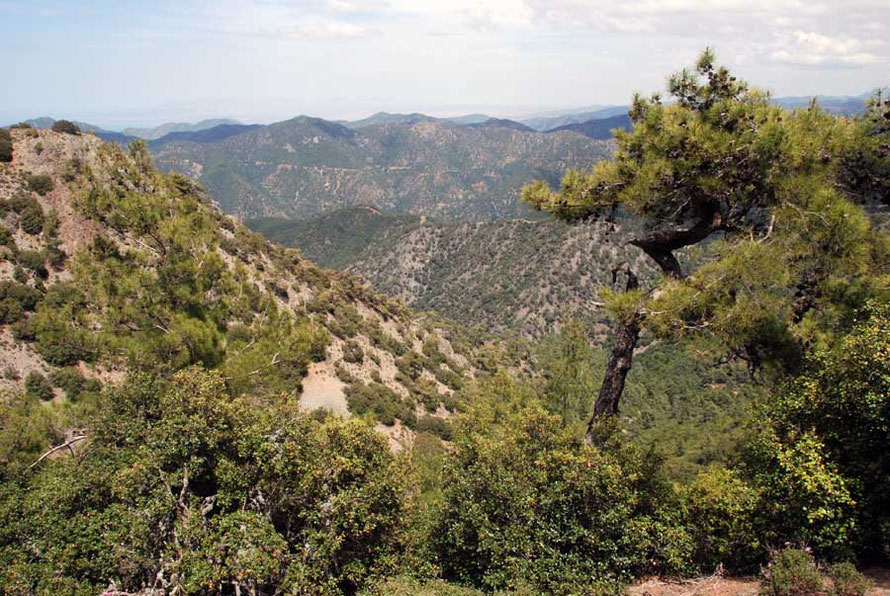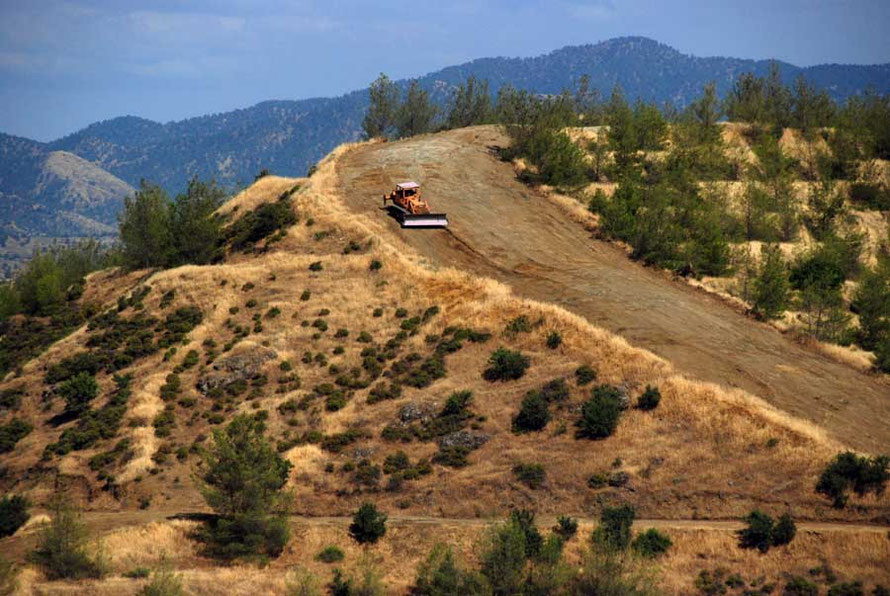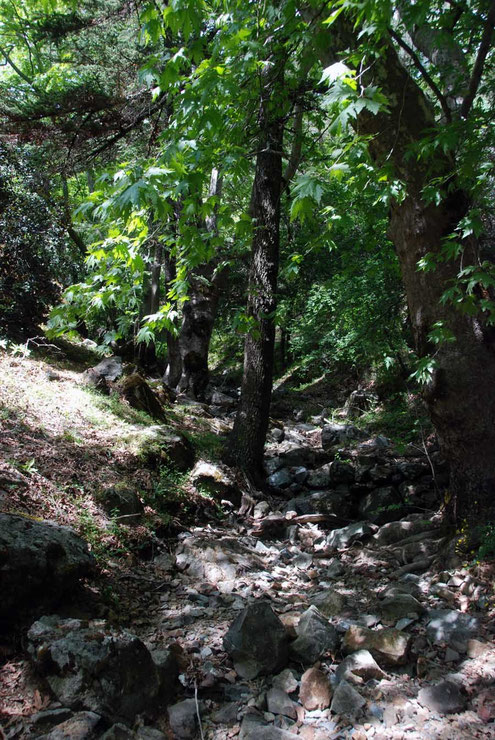Mountains III: Cedar Valley
Ever since I'd read about the Troodos, 'Cedar Valley' had held a special attraction for me. I had pleasant visions of a broad valley filled with the resinous smell and deep, satisfying shade of Cedars of Lebanon.
From the dirt road turnout onto the metalled road to the Stavros junction I didn't see a car. It was a delight to drive high amongst the mountains with distant views, ridge upon ridge of pine woodland stretching away to what seemed to be the distant sea.
I stopped to take a picture of this curious nest in a Brutia pine. But so far I have been unable to identify it. There is a beetle in the picture and the nest appears to be made of seed heads held togther with spider silk. My searches as usual have led me down all sorts of interesting byways to do with the Pine Processionary Moth and various wood boring beetles but so far I have drawn a blank.
Somewhere I will list some interesting facts about the Brutia Pine Forests of Cyprus - but if you can't wait (lol) click here for this interesting paper. It is genuinely interesting and there are lots of them - Brutia forests in Cyprus, that is. The facts actually follow just below.
The road between the dirt road from Pomos through Stavros tis Psokas gives breathtaking views of the Brutia Pine forests that stretch away to the east. The Troodos here have exceptionally steep slopes and in what appears to be very friable and shaly rock it is amazing that the trees can stand.
But Brutia Pine have two defining characterists - they are able to withstand drought and a high temperature range. To do this they develop very deep roots which makes them remarkably drought resistant and windfast. Looking at the steepness of the slopes one wonders if it is the trees that are keeping the Troodos up and or vice versa.
Exceptional summers will kill many trees, however, particularly on shallow soils in wind suffering sites. At 1,600m the Brutia Pine is replaced by the Black or Austrian Pine (pinus nigra).
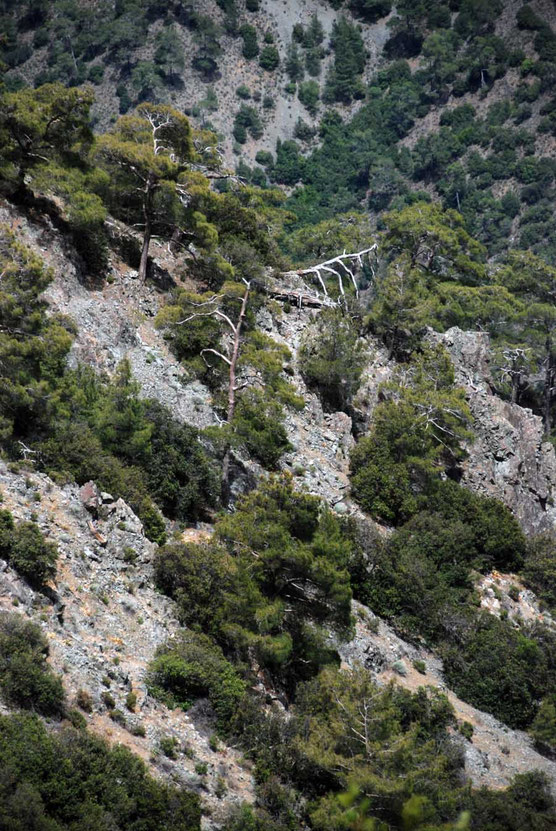
Brutia Pine account for 90% of Cyprus' 175,000 hectares of forest of which 44,000ha are currently exploitable. 57,000 cubic metres of timber are produced a year and this goes to constructional timber, chipboard, boxes, and charcoal.
The greatest threat to the pines is fire and the Forest Department has put in place a comprehensive network of hydrants, teams, lookouts and firebreaks and fire losses each year are small averaging 0.1% of the total forest area.
There's a saying on the island that goes: Nothing spreads faster than gossip and a forest fire. At least nineteen British troops were imolated in a Troodos forest fire on a search and destroy mission with 20,000 troops - Operation Lucky Alphonse - against EOKA mountain networks.
Forest regeneration needs some assistance and planting is carried out after terraces with an in or- out-facing slope are created with heavy machinery. Brutia pine are a strong, light-demanding species and with their deep and extensive root systems they do not naturally develop a continuous canopy.
There is a preponderance in existing forests to mature and overmature trees and where these do not have amenity value they are being felled and reseeded.
The most damaging pest to the pines is the Pine Processionary Moth (Thaumetopoea wilkinsoni Tams) which eats the needle shoots. Some spraying against the moth is done by plane.
The Brutia Pine can grow up to 40m in height on good soils - preferably slightly acidic - and can reach a diameter of 100 cm over a period of 100-110 years. (For the above see The forestsof brutia pine in Cyprus V. Pantelas, Senior Conservator of Forests Ministry of Agriculture and Natural Resources)

I continued on my drive, past Stavros tis Psokas, where a group of young bike riders stood panting in the strong sun with a range of head gear (caps, shirts, etc) having made the climb up from Polis. I waved in a friendly fashion (being the first people I had seen for over two hours) but they clearly thought I was some form of insect in a car and waved not back.
I continued and took the right turning for Cedar Valley, looking forward to its taverna, deep shade, running stream, late spring flowers etc. After more seemingly endless curving road I arrived and after the build I had given the place I could not help but be a little disappointed.
It was churlish of me to be disappointed, I know. I had been driving for four hours without much of a break along difficult roads that required plenty of concentration. From the guidebooks, and through no fault of theirs I suspect, I had under-estimated the wildness of the Troodos and Tilliria in particular.
I parked beyond the tight corner where a stream would have been flowing under the tall Cyprus Cedars (cedrus brevifolia) which are endemic to the island. I enjoyed sitting still and having the place almost to myself. A Brit couple were just returning to their hire car from the summit signed up a steep footpath. They had both been teachers with the Armed Forces and she regaled me with stories of hitching lifts to Cyprus from Malta in military transports back in the day.
They asked me if the cedars were the trees with the flat branches and I said, 'Yes' I thought they were. I mean, I'm no botanist but come on!
I strolled up the rough track by the stream bed in my highly inappropriate flip flops across a seep of water. For my indiscretion I was rewarded with a fleeting glimpse of a Cyprus Fox (vulpes vulpes indutus) which is an endemic subspecies of the fox. And less fleeting glimpse of a pretty orange poppy (papaver postii).
I returned to the car and ate some of the processed goat cheese - which had sweated fat like crazy in its wrapper - and more of the deliciously crunchy sesame breadsticks. It was no feast but it was enough for me.


